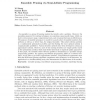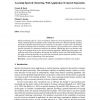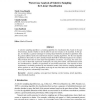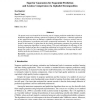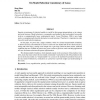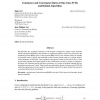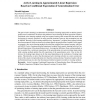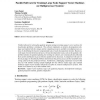105
click to vote
JMLR
2006
15 years 19 days ago
2006
An ensemble is a group of learning models that jointly solve a problem. However, the ensembles generated by existing techniques are sometimes unnecessarily large, which can lead t...
JMLR
2006
2006
Geometric Variance Reduction in Markov Chains: Application to Value Function and Gradient Estimation
15 years 19 days ago
We study a sequential variance reduction technique for Monte Carlo estimation of functionals in Markov Chains. The method is based on designing sequential control variates using s...
117
click to vote
JMLR
2006
15 years 19 days ago
2006
Spectral clustering refers to a class of techniques which rely on the eigenstructure of a similarity matrix to partition points into disjoint clusters, with points in the same clu...
113
click to vote
JMLR
2006
15 years 19 days ago
2006
A selective sampling algorithm is a learning algorithm for classification that, based on the past observed data, decides whether to ask the label of each new instance to be classi...
107
click to vote
JMLR
2006
15 years 19 days ago
2006
We present worst case bounds for the learning rate of a known prediction method that is based on hierarchical applications of binary context tree weighting (CTW) predictors. A heu...
107
click to vote
JMLR
2006
15 years 19 days ago
2006
Sparsity or parsimony of statistical models is crucial for their proper interpretations, as in sciences and social sciences. Model selection is a commonly used method to find such...
108
Voted
JMLR
2006
15 years 19 days ago
2006
This paper presents an online support vector machine (SVM) that uses the stochastic meta-descent (SMD) algorithm to adapt its step size automatically. We formulate the online lear...
120
click to vote
JMLR
2006
15 years 19 days ago
2006
We determine the asymptotic behaviour of the function computed by support vector machines (SVM) and related algorithms that minimize a regularized empirical convex loss function i...
119
click to vote
JMLR
2006
15 years 19 days ago
2006
The goal of active learning is to determine the locations of training input points so that the generalization error is minimized. We discuss the problem of active learning in line...
121
click to vote
JMLR
2006
15 years 19 days ago
2006
Parallel software for solving the quadratic program arising in training support vector machines for classification problems is introduced. The software implements an iterative dec...
